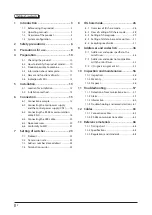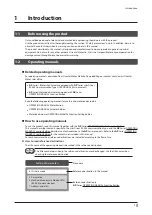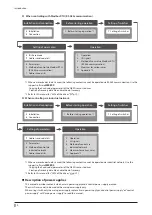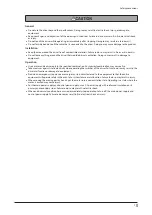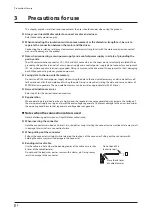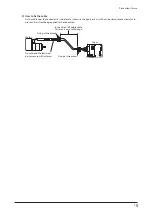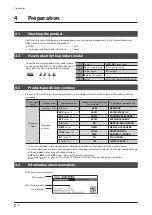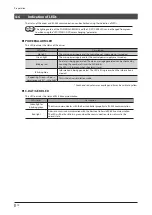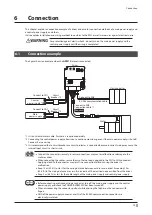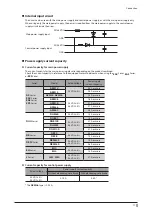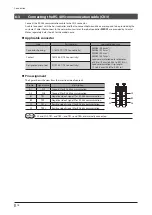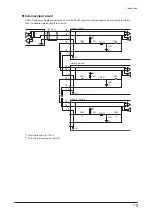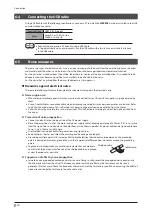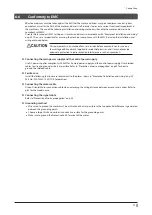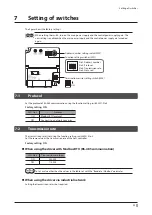
Precautions for use
8
3
Precautions for use
This chapter explains restrictions and requirements the user should consider when using the product.
z
Always use Oriental Motor cables to connect a motor and a driver.
Refer to the cable models on p.63.
z
When conducting the insulation resistance measurement or the dielectric strength test, be sure to
separate the connection between the motor and the driver.
Conducting the insulation resistance measurement or dielectric strength test with the motor and driver connected
may result in damage to the product.
z
Note when connecting a main power supply and a control power supply in a state of grounding the
positive side
The USB communication connector, CN1, CN2, and CN3 connectors on the driver are not electrically insulated. When
grounding the positive terminals of a main power supply and a control power supply, do not connect any equipment
(PC, etc.) whose negative terminal is grounded. Doing so may cause the driver and this equipment to short, damaging
both. When connecting, do not ground equipment.
z
Saving data to the non-volatile memory
Do not turn off the control power supply while writing the data to the non-volatile memory, and also do not turn off
for five seconds after the completion of writing the data. Doing so may abort writing the data and cause an alarm of
EEPROM error to generate. The non-volatile memory can be rewritten approximately 100,000 times.
z
Noise elimination measures
Refer to p.20 for the noise elimination measures.
z
Regeneration
When operating a large load inertia at a high speed, the regenerative energy generated may increase the voltage of
the main power supply, causing an alarm of the overvoltage to generate. To prevent damage to the driver, reconsider
the operating conditions so that regenerative voltage does not generate.
Notes when the connection cable is used
Note the following points when an Oriental Motor cable is used.
z
When inserting the connector
Hold the connector main body, and insert it in straight securely. Inserting the connector in an inclined state may result
in damage to terminals or a connection failure.
z
When pulling out the connector
Pull out the connector in straight while releasing the lock part of the connector. Pulling out the connector with
holding the cable may result in damage to the connector.
z
Bending radius of cable
Use the cable in a state where the bending radius of the cable is more than
6 times of the cable diameter.
Do not bend the lead wires part or secure with a clamp, etc. Doing so may
result in damage to the connector.
More than 6 times
of cable diameter.
Do not bend the
lead wires part.


